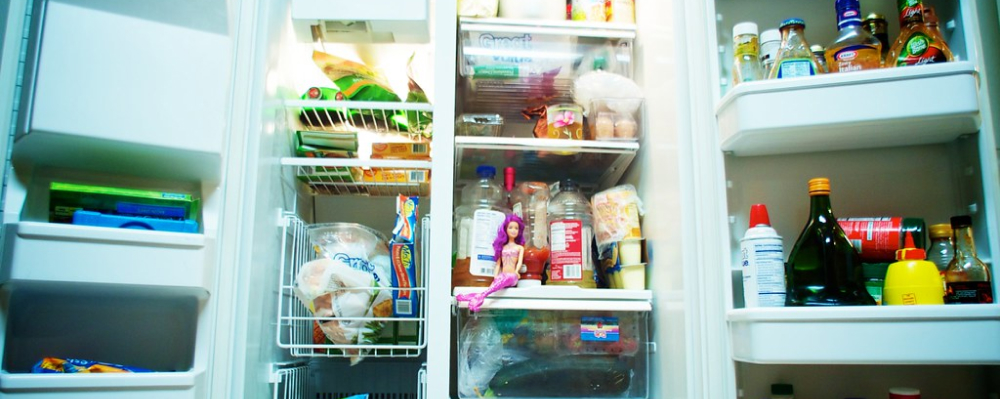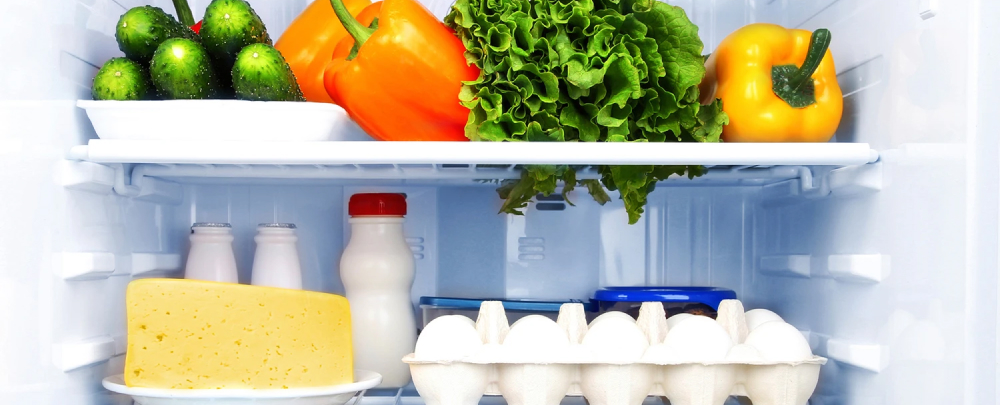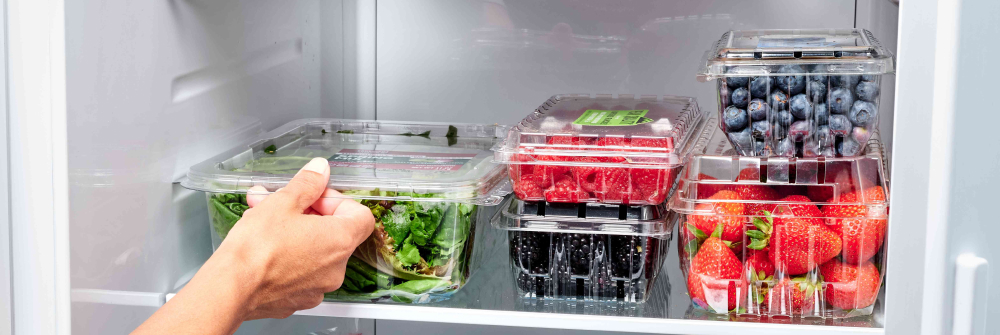Finding your fridge not cooling but light is on can be a disconcerting experience, especially when you depend on this vital appliance to preserve your food and maintain your lifestyle. Before you panic, it’s important to understand that there can be several reasons behind this paradoxical issue. By identifying and addressing these problems, you can restore your fridge to its optimal performance, ensuring the preservation of your groceries and the efficiency of your kitchen.
If you’ve encountered this issue, consider reaching out to expert refrigerator repair services. Technicians specializes in diagnosing and resolving complex refrigerator problems.
Checking Power Supply and Temperature Settings
When you encounter a scenario where your fridge and freezer are not cooling but light is on, it is crucial to first assess the basic elements of power supply and temperature settings. This essential step can sometimes reveal simple issues that can be rectified without any need for professional assistance.
Firstly, let’s start with the power supply. Ensure that your refrigerator is properly plugged into a working outlet. Check the power cord for any visible signs of damage or wear that could be affecting the power supply. You can confirm whether the outlet is functioning correctly by plugging in another device, such as a lamp or a toaster, to see if it operates correctly. If the other device works without any issue, then it’s likely that your home’s electrical system isn’t the problem.
However, if your refrigerator remains powered but isn’t cooling, the issue could be internal. You may also want to check your home’s circuit breaker or fuse box to make sure there hasn’t been a trip or a blown fuse that might be affecting the refrigerator’s operation.
When your fridge is not working but the light is on, it’s time to inspect the temperature settings. These settings control the cooling mechanisms of the fridge and freezer, and a simple misconfiguration could cause cooling issues. Ensure that these controls are set to the appropriate levels. For most models, the ideal setting for the refrigerator compartment is around 37 degrees Fahrenheit (or 3 degrees Celsius), while the freezer compartment should be set at around 0 degrees Fahrenheit (-18 degrees Celsius).
If you’ve recently purchased a new appliance and your new fridge is not cooling but the light is on, it’s possible that the temperature settings were not properly configured during installation. Check the user manual for the manufacturer’s recommended settings. Remember, it can take up to 24 hours for a new refrigerator to reach the desired temperature after initial setup.

Airflow and Condenser Coils
The proper cooling of a refrigerator depends on adequate airflow and the efficient functioning of its condenser coils.
Air Damper
At the heart of the refrigerator’s internal air control system is the air damper. This component is vital in the regulation of cold air that passes from the freezer section into the fridge. When functioning correctly, the damper opens and closes to allow the right amount of cold air into the refrigerator compartment, maintaining the optimal temperature for food preservation.
However, problems arise when the damper becomes stuck, blocked, or broken. This could result in an improper balance of cold air in your fridge, leading to issues where your fridge light is on but not working as effectively as it should. The damper may become jammed due to debris or ice build-up, or it may fail due to mechanical issues.
If you are experiencing a situation where your fridge light is on but not working properly, it’s worth investigating the condition of the air damper. Regular cleaning and maintenance are essential to ensure its smooth operation. Depending on your refrigerator’s make and model, you may need to manually clean the damper or have it serviced by a professional. Check your owner’s manual for specific instructions.
Condenser Coils
Another crucial element in your fridge’s cooling system is the condenser coils. These coils play a key role in the heat exchange process, dissipating the heat as the refrigerant gas passes through them. They essentially act like a radiator, releasing heat collected from inside your fridge into the outside environment.
However, these coils can become dirty or blocked over time due to dust, pet hair, and other airborne particles. When this happens, they can’t release heat effectively, leading to a scenario where the fridge light is on but not cooling.
Regular cleaning of these coils can drastically improve your fridge’s cooling efficiency. Unplug your refrigerator and use a coil cleaning brush or a vacuum to carefully remove dust and dirt from the coils. This should be done at least once or twice a year, depending on the usage and environment.
Condenser Fan
Working in tandem with the condenser coils is the condenser fan. This fan is responsible for pulling air over the condenser coils, aiding in the heat dissipation process. A malfunctioning or blocked condenser fan could lead to insufficient cooling, even though the fridge might be running.
It’s important to regularly check the condenser fan for any blockages or signs of damage. Over time, debris or a buildup of ice can obstruct the fan, impairing its function. A clean, unobstructed, and properly functioning condenser fan is crucial for optimal refrigeration.
It’s worth noting that while many of these maintenance tasks can be performed at home, if you’re unsure or uncomfortable performing them, it’s best to hire a professional. Always prioritize safety when dealing with electrical appliances.
Investigating Compressor and Evaporator Components
When you encounter a refrigerator not cooling but light is on situation, it’s worth checking the compressor and evaporator components.
Compressor
As the heart of your fridge’s cooling system, the compressor’s role is pivotal. It’s a motor that compresses the refrigerant gas and circulates it throughout the system, thereby enabling the refrigerator to maintain a cool temperature.
When functioning correctly, the compressor cycles on and off, maintaining the ideal temperature inside the refrigerator. However, if the compressor is malfunctioning or failing, it won’t be able to perform this function efficiently. This will lead to your fridge not cooling properly, even though the light is on.
If you are experiencing a situation where your fridge light is on but the fridge is not running or cooling, it could indicate a potential issue with the compressor. Compressor issues are typically characterized by strange noises, such as clicking or buzzing sounds coming from the back of the fridge. It’s important to note that compressor problems are complex and require professional attention, as they involve handling the refrigerant system. If you suspect a compressor issue, it’s advisable to contact a trained technician who can safely inspect and repair the compressor.

Evaporator Coil
The evaporator coil is another key player in your fridge cooling mechanism. Located inside the freezer compartment, these coils absorb heat from inside the fridge, thereby cooling the air that circulates within.
However, issues arise when the evaporator coils become frosted or iced over. This frost build-up prevents the air from interacting with the coils, which, in turn, impedes the cooling process. Consequently, you may find your fridge light is on but not cooling.
Regular defrosting can help mitigate this issue. Most modern refrigerators have an automatic defrosting system, but if this fails or if your fridge is an older model, you may need to manually defrost it. To do this, you’ll need to unplug the fridge, remove all food and shelves, and leave the doors open to allow the frost to melt. Remember to place towels around the base of the fridge to catch any water.
Evaporator Fan
Finally, the evaporator fan plays a significant role in the fridge cooling system. This fan blows air over the evaporator coils, thereby helping to distribute cold air throughout the fridge and freezer compartments.
If the evaporator fan is malfunctioning, your fridge may fail to cool correctly. This issue can manifest in several ways, such as unusual noise or reduced air circulation within the fridge. To investigate, check for blockages or signs of damage that might be impairing the fan’s function. Ensure there’s no excessive ice build-up blocking the fan and that it’s spinning as it should when the fridge is on.
Again, if you’re uncomfortable checking these components or if they need replacement, it’s best to contact a professional. While a hands-on approach can be useful for simple fixes, certain refrigerator repairs require specific tools and expertise to avoid causing further damage or potential safety risks.
Other Potential Issues to Consider
Even after meticulous inspection and maintenance of common fridge components, you may still be puzzled by the ongoing issue of your fridge light being on but not running effectively. In such instances, you may need to explore other potential issues that could be affecting your refrigerator’s ability to cool properly.
Defrost Setting
One potential problem could be your refrigerator becoming stuck in the defrost cycle. Modern refrigerators come with automatic defrosting mechanisms to keep the evaporator coils from frosting over. However, if the fridge gets stuck in this cycle, it can prevent the appliance from maintaining a cool temperature.
To investigate this, check the defrost timer and the defrost thermostat. The defrost timer controls how often the fridge enters the defrost cycle, while the defrost thermostat monitors the temperature of the evaporator coils. If these components are malfunctioning, they may need to be replaced.
Door Seal
The door seal, also known as the door gasket, is another overlooked but essential component of your refrigerator. Its job is to seal the cool air inside the fridge and keep warm air out. A damaged or worn-out seal can let warm air sneak into the refrigerator, causing the appliance to work harder than necessary to maintain a cool temperature, or in some cases, it may fail to cool at all.
Regularly inspect your fridge door seals. Look for any signs of damage, such as cracks or tears, and feel for areas where cold air may be escaping. Cleaning the seals with a mild detergent and warm water can help maintain their effectiveness, but if they’re damaged, they’ll need to be replaced.

Start Relay
The start relay is an indispensable component of your fridge’s cooling system, serving as the liaison between the compressor and the capacitor. This small but vital device plays a pivotal role in helping the compressor run efficiently by providing a much-needed boost of power at startup, essentially “jump-starting” the compressor into action.
In a smoothly functioning refrigerator, the start relay kicks off the compressor’s operation each time the fridge needs to maintain its set temperature. However, if the start relay is faulty, it can create a fridge not working but light on scenario.
The malfunction of a start relay can lead to a few noticeable symptoms. Primarily, the compressor may struggle to initiate, or worse, fail to start at all. As the compressor is the cornerstone of your fridge’s cooling mechanism, its inability to function will lead to the fridge not cooling, despite the light being on. In such a case, the culprit might be a faulty start relay.
A physical sign of a faulty start relay is a rattling noise that can be heard when you shake it. This sound is produced by the electrical contacts within the relay, which may have come loose or broken due to wear and tear. Additionally, you might also notice a burnt smell or see a build-up of dust or debris around the relay, both of which can indicate a malfunction.
If you suspect a faulty start relay, it’s highly recommended to seek professional help for its replacement. Working with electrical components carries a risk of electrical shock, especially for those unaccustomed to appliance repair. Furthermore, an incorrect installation can potentially cause additional damage to your refrigerator.
Temperature Thermostat
Lastly, the thermostat is a critical component that controls the temperature settings in your fridge. It dictates when the cooling cycles occur based on the temperature that you’ve set for the fridge and freezer compartments. If the thermostat is malfunctioning, it could lead to irregular cooling cycles and, consequently, improper cooling.
Diagnosing thermostat issues can be challenging and often require professional repair or replacement. If your fridge isn’t maintaining the set temperature consistently, or if it’s running continuously, these could be signs of a faulty thermostat.
A fridge not cooling but light is on situation doesn’t necessarily indicate a catastrophic failure. It could be linked to simple issues that can be easily addressed with a bit of know-how and maintenance. However, if your troubleshooting efforts don’t yield results or if the problem seems to lie with more complex components, seeking professional help is advisable. Experts have the required training and tools to handle intricate repairs and ensure the safe, efficient operation of your refrigerator.